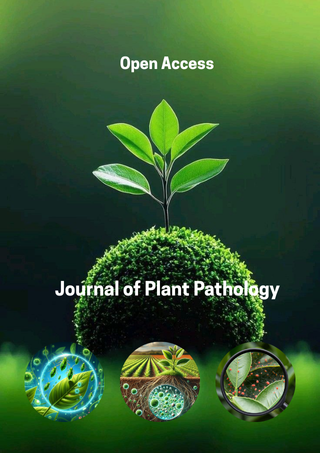Indexed In
Journal Flyer

Journal Highlights
Useful Links
Recommended Journals
Open Access Journals
ABSTRACT
Plant disease resistance remains a cornerstone of global food security and sustainable agriculture. With the continuous emergence of new pathogen strains, integrating traditional breeding with molecular biology tools has opened novel avenues for enhancing crop resilience. This short communication highlights recent progress in understanding plant immune mechanisms and the translational potential of emerging biotechnologies, including CRISPR-Cas9 and RNA interference, in engineering durable resistance.
Keywords: Plant immunity; CRISPR-Cas9; R genes; RNA interference; disease resistance breeding; molecular plant pathology
DESCRIPTION
Plant diseases, caused by diverse pathogens such as fungi, bacteria, viruses, and nematodes, are responsible for substantial agricultural losses each year. Traditional resistance breeding, although effective, is time-consuming and often limited by narrow gene pools. Recent breakthroughs in plant molecular biology and genomics have unveiled precise mechanisms underlying plant immunity and enabled targeted interventions.
Current Understanding of Plant Immunity
Pattern-Triggered Immunity (PTI) is activated by pathogenassociated molecular patterns (PAMPs), such as flagellin or chitin. Effector-Triggered Immunity (ETI) occurs when resistance (R) genes recognize specific pathogen effectors, leading to localized cell death and systemic responses. The discovery of nucleotide-binding leucine-rich repeat (NLR) proteins has revolutionized the identification of R genes across species. These genes form the basis for durable resistance in many crops.
Molecular Tools for Resistance Enhancement
CRISPR-Cas9 Genome Editing: Enables knockout of susceptibility (S) genes or insertion of synthetic R genes, improving pathogen resistance without introducing foreign DNA. RNA Interference (RNAi): Offers pathogen-specific gene silencing strategies, particularly against viruses and fungi. Marker-Assisted Selection (MAS): Accelerates breeding by selecting individuals with favorable resistance alleles.
Case Examples
Tomato (Solanum lycopersicum): CRISPR-mediated editing of the SlMlo1 gene confers broad-spectrum resistance to powdery mildew. Wheat (Triticum aestivum): Incorporation of Lr34 and Sr2 genes provides durable resistance to rust diseases across environments. Rice (Oryza sativa): Pyramidization of Xa genes enables resistance to multiple bacterial blight strains. Despite these advances, resistance can be short-lived due to rapid pathogen evolution. Strategies such as gene stacking, pangenomics, and synthetic biology are essential to outpace pathogen adaptation. Moreover, regulatory clarity and public acceptance of gene-edited crops remain critical for their adoption.
CONCLUSION
Integrating traditional breeding with modern molecular technologies holds the promise of long-term, sustainable plant disease resistance. Continued investment in genomics, phenotyping platforms, and collaborative breeding programs will be key to addressing future pathogen threats in a changing climate.
